
In my recent COAL, I mentioned that our 1993 Corolla still seems like a contemporary car when I look at its design and specifications from today’s perspecctive.
A 16V DOHC transverse engine with EFI, front wheel drive with standard rack and pinion power steering, airbag (though only one), a fairly aerodynamic body style that doesn’t look that different from today’s Corolla … etc. On the other hand, the 1993 Corolla had no electronic traction or stability features, let alone ABS, no infotainment, and still came standard with rollup windows, no air conditioning, and “manual” door locks. Nevertheless, it still seems quite modern to me, 25 years later, compared to a 1968 Corolla when judged by the standards of 1993.
Or look at the recently featured Morris Minor. Over 40 years before my Corolla, it had unibody construction and rack and pinion steering. Perhaps 1948, with the Minor, and the US launch of the ‘49 Ford, which said farewell to transverse leaf springs, and the Jeepster, which heralded Jeep’s later success with lifestyle vehicles. was the start of the modern era of automobiles. Or was it 1994, when the RAV4 popularized the current architecture for crossovers, or 2011, when the last US-made rear wheel drive V8 Ford sedan, a Crown Victoria, rolled off the production line? Perhaps it was 2010, when the Nissan Leaf became the first widely available all-electric car.
What do you think … when did the automobile reach conformity with the current design norm, and what car best represents that? Hint: there is no wrong answer!



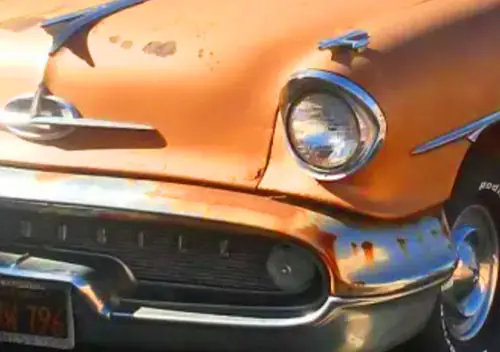
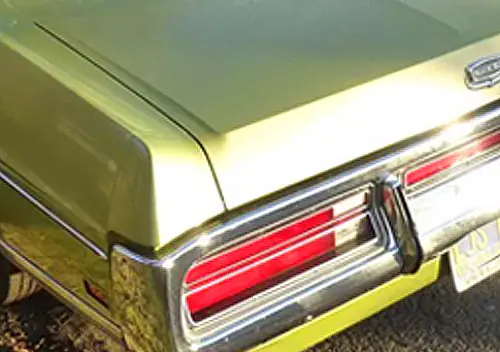
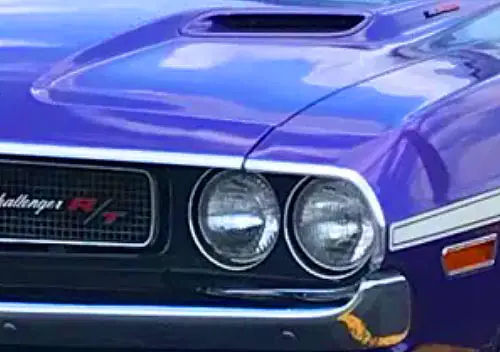

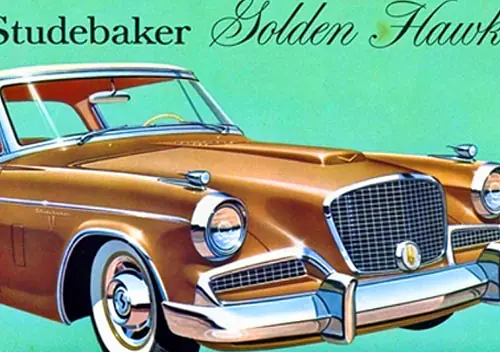
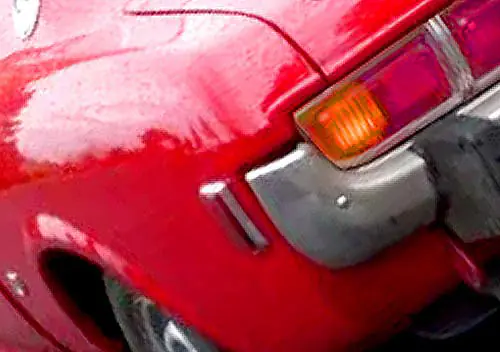

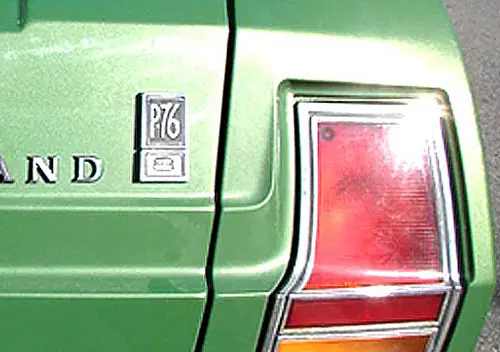
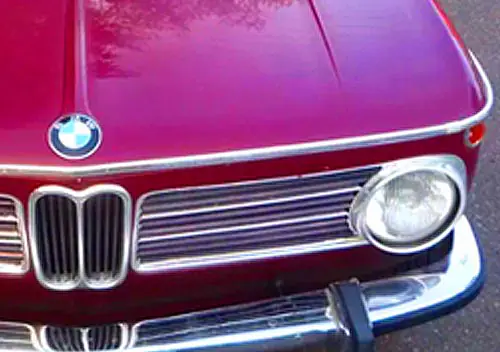
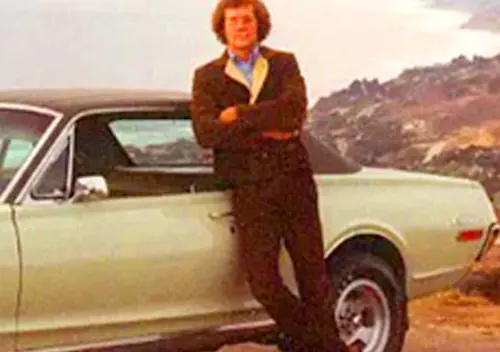


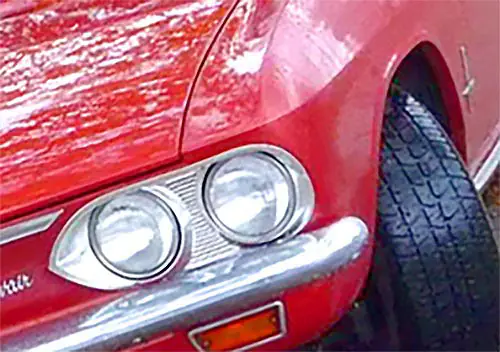


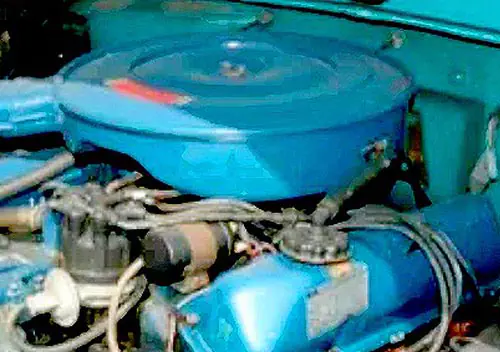



I also think about the nineties.
My 1993 Audi 80 wagon has all 4 power windows, power locks, power steering, A/C, ABS, soft dash materials, a turbo diesel engine with an intercooler and direct injection, and styling from the great aero era
Cons: no airbags (optional), and it came standard with roll-up windows (you can still get. a Citigo with them)
A 1990 model-year car still feels contemporary to me. Even though it’s really not at 28 years of age.
Maybe a good litmus test would be any U.S. passenger car with a Federally-mandated driver’s side airbag is a ‘Modern’ car? Or maybe if a car had airbags on ♦both♦ driver and passenger sides it would be a truly Modern car?
Either way, any car with airbags is too modern for me to own. (Automotive Luddite status has been conferred upon me).
Perhaps the Modern Age of automobiling perhaps started on September 9, 1966 when Pres. Lyndon Johnson signed the National Traffic and Motor Vehicle Safety Act and Highway Safety Act — the precursors to what’s now known as NHTSA. By 1970 there were quite a few features on new cars that I do not have inside or outside of my ’64 Falcon. There’s a laundry list . . .
Windshield washers / Shoulder belts / Orange hazard flashers / Side-marker lights / Padded dashboards / Head restraints mounted on front seats / Collapsible steering columns / no more chrome horns in center of steering wheels / ANY form of emission control or crankcase ventilation . . . and probably ~more~ things that I’ve forgotten about.
If I’m wrong about anything ^above^ please let me know.
→ I don’t know when chrome windshield wipers went out of vogue -or- if there was a Federal law that made them illegal by a certain model year? My ’67 Lincoln had chrome windshield wipers, but I can’t recall seeing them on cars of the 1980s. Any info is welcome.
Duel circuit master cylinder for ’67 , parking lights on with headlamps for ,68 cars , my dads valiant had a chrome horn ring but satin wiper arms
Thanks for the info about the braking system and parking lights. Totally forgot about them.
I reckon at some point by the late ’60s back-up lights and side-view mirrors on passenger cars became mandatory.
A 1992 Camry still feels contemporary. Though maybe the real credit goes to the Taurus? I never drove an original one, though.
I would agree with the Taurus. Aerodynamic exterior, ergonomic, swoopy interior, electronically controlled trans, FWD power package, front and rear subframes, fuel injection with electronic engine control, semi-concealed wipers, halogen headlamps, alloy wheels on many models. The basics of today. GM had many of these on the A-Body, and some on the X-Body, but didn’t seem to incorporate them as much into as much of the model mix.
Funny that Ford is abandoning cars 33 years later, leaving a RWD sports coupe and nothing else.
I drove a very early rental Taurus back to back with rental LTD Fox. The latter had felt really nice for what it was, decent road feel, decent power from a 302 V8, etc. The Taurus was an eye-opener. Sure, Audi had done it earlier and better … but this was a mainstream American sedan. It was hugely different in almost every way … ride, handling and interior roominess … totally aside from the style. Agree that the Tempo which someone mentioned was a step in that direction too, and came before the Taurus, but it was a smaller car and not aimed straight at the then center of the US market.
I think what is contemporary, state-of-the-art in cars evolves any other 20-25 years from one phase to the next, while transitions are fluid, obviously. I‘d say we‘re experiencing such a transition right now, what with electrics and autonomous driving.
However, the „modern car“ as such – and I mean the standard we‘re currently driving and (still) buying – came about in the late 80s / early 90s. I’d say the progenitor was the 1984 Mercedes W124, which had a massive influence worldwide and widely served as a template what a car could be (should be?). A good W124 still can serve almost every motoring need today, and beside some minor digital gadgets (such as sat nav or HUD or parking aids) lacks little a 2018 car has to offer. But no, it will keep it‘s internal combustion engine and will very probably never drive itself (or fly or whatever comes next).
I think that 1996 and ODBII is a real watermark on when things started getting “modern”. With OBDII, one started seeing the rise of the computer in cars, and the resulting change from fixing things to replacement of parts based on codes.
Other than ABS, what we see now are just either widespread acceptance of “luxury” items as standard and reliable fuel injection. Compare a 1950s luxury model with a new Mitsubishi Mirage, and both seem to have a lot in common, as far as equipment. Size, and related economy, not so much, but as far as accessories, mostly the same. Except there is probably a better radio and a rear view camera in the Mitsubishi!
This ^^^. I see this as the tipping point.
Bye-bye carburetors. 4-speed automatics and 5-speed manuals are now ubiquitous – even lowly vehicles feature one or the other. Airbags, crumple zones, suspension, larger wheels and tires, A/C, etc. All of those things really started to gel in vehicles by this point. The 7 or 8 years leading up to OBDII saw a sea change in vehicle quality and the consumer’s expectation thereof. There were powertrains that could easily go 150-200k miles will routine maintenance, and it was a matter of bringing the other systems up to this level of durability. Leaps and bounds in a matter of one or two short generations. Amazing.
My father bought a 1993 Nissan Maxima. He was so taken by the quality, economy, power, and luxury that he, even many years later, declared it the best car he had or would ever own. Outside of the Illinois winters causing some distress and minor rust, that Maxima was as reliable and comfortable as you could have dreamt of at the time. I believe this to be the first truly modern car that I had ever driven. My first cars were no newer than mid-1980s vehicles, and they were horse-and-buggy by comparison.
I was 12 when he bought it, and I bought it off of my Dad when I was 22 with 185,000 miles on the clock. I loved that car. I have little doubt anyone would say anything different about any contemporary Camry or Accord, let alone a BMW, Mercedes, etc.
I would add R-134 a/c refrigerant to your list of modern features.
I am also a fan of both the J30 (1989-1994) and A32 (1995-1999) Nissan Maximas. The J30 was better looking and arguably had better suspension, but the A32 had that VQ30DE that seemed to deliver the perfect balance of torque and revs, power and economy, performance and reliability. If I found a clean-bodied J30 or A32 at this point I’d snap it up in a heartbeat.
I think the term “modern” is generational. In some ways I still think of 1949 as the beginning of a “modern” era in that it set the template for what people were buying and driving in the mid 1970s when I first began driving. But one drive of a car of that era would explode any chance of it being modern in any normal use of the word.
The 70s added modern safety. The 80s began modern electronics. I would have to go with the 90s because a 90s car operates pretty much the way any car does today and is still useful as daily transportation without becoming a fanatic about it.
A related question: what was the last “old style” car–the last dinosaur?
I think it’s hard to beat a 1991 Grand Wagoneer, though you could also make a case for the 1992 Cadillac Brougham or the last Chrysler M-bodies (1989).
Don’t forget the Panthers.
Interesting you say “the Panthers”. While I agree it was the end of an era for Ford, the Panther platform was also the comet or asteroid that ended the real dinosaurs, like the 1978 LTD that preceded it.
Other than being a body on frame passenger car, Panthers were as modern as any other basic car under the skin between 2003 and 2012 – overhead cam engine, multipoint fuel injection, networked electronics, rack and pinion steering, and good brakes to name the basics. Even style wise they were modern with the 92 refresh, they formalized them in 98 but they still have modern soft edges, fast raked windscreens, composite headlamps and plastic bumpers like any other modern design.
Technology wise you can’t really call a Panther a dinosaur any more than you can a current pickup truck, it’s old fashioned but nothing under the skin is actually that old, unlike the Wagoneer.
I have a 2002 Panther, the last year before the final refresh. Still has pitman-arm steering; I didn’t realize that the Panthers got rack-and-pinion in 2003. Interesting.
The 2003 and up has an essentially all new chassis. Rear control arms, brakes and sway bar are the only significant carryover parts. not even the wheels are the same
How about a naturally-aspirated V8, manual transmission, rear-wheel drive four-door sedan?
One of those just recently showed up in my neighborhood Ed, and yes, I’m a little jealous. ;o)
There’s also one running around Columbia, MD where I work all done up in Holden guise like yours! It’s even the same color and similarly striped.
I have seen that one also. It seems to hang out on Broken land Parkway, Rte 175 and Snowdon River Parkway.
I suspect it lives in the Oakland Mills area.
I have seen it at rest in front of the Dobbin Center Chick Fil-a but had no time to snap a pic of wait for the owner
I spotted it earlier this summer (or late spring?) making a left off the ramp from 32 westbound onto Shaker Drive northbound (I go the other way to get to work). I immediately thought of Ed’s Holden SS.
With split lower wishbone Mac struts, multi-link IRS, 2012-current tech etc it isn’t that much of a dinosaur! Well you might make a point with pushrods. (throws grenade and runs…)
1996 GM B-bodies might be a good example. 20th year for the platform, though modern in many ways at the time.
As a fan of the cars, I would say they were old fashioned where it was good to be old fashioned (good durability, isolation, ride and handling from BOF RWD chassis) and modern where it was good to be modern (powerful EFI engine, good aerodynamics, airbags, ABS, etc)
Checker marathon ,last produced in 1982 designed in the 50’s
Trucks add another aspect to it. 1991 was likewise the last year for the Chevy Suburban/Tahoe that was designed in the early 70’s. You’ve also got the Dodge Ram which also dated from the early 70’s that was made all the way to 1993. The Isuzu pickup is also one of the very last carbureted vehicles sold in the US before being replaced by a rebadged Chevy S10 in the mid-90’s, though other than the carbureted aspect the Isuzu truck otherwise feels modern.
Honorable mention would go to the 9th generation F-series which was made through 1997. While feature-wise I would definitely place it into the modern category, styling wise to me it’s the last cleanly styled, functional, old-school, honest pickup. After that things started going down the path which has lead us to the cartoonish, overstyled pickups we have today.
The Land Cruiser 70 series was launched in 1984 and is still sold today with a few updates – coil springs on the front, new generation engines and minor body & interior updates. They don’t even have curtain airbags on most versions.
Styling nonwithstanding, you could buy an new izuzu with a carburetor in the US up to 94-95.
I’m voting for 1973. Crash bumpers, emission controls, seat belts, and err, padded vinyl roofs.
I used to think ’73 also. My additional reasons were disc brakes, radial tires, and electronic ignition. I don’t care about electronics and connectivity in cars, so I still view my ’93 Ranger as a modern truck. It’s hard for me to take electronics in cars seriously when they go out of style as quick as a cell phone. Being born in the ’60’s no doubt colors my perception.
I’d go with the early 1990s. The 86 Taurus was a game changer but it took a while for everyone to catch up.
By 1993 even Chrysler gave in to the “jelly bean” design language.
I think it depends on when one was born.
When I was 9 years old my father bought a new 1953 Packard and I marveled at how sleek and modern and shiny it looked compared to my mother’s dull black 1936 [or 37) Studebaker.
I asked my father why any company would build a car that looked so old.
His reply: “Well, it started out looking modern, but then over time it started to look old.”
In my 9 year old mind’s eye, the old Studebaker started out with smooth fenders, and shiny gray paint, and then, over time, the fenders ballooned out, the headlights popped up on top of the fenders, and it evolved into what stood before me in the driveway. It did not make sense, but that’s what my father said and he knew what he was talking about.
Of course, maybe I wasn’t the sharpest 9 year old on the block.
But that Packard sure was modern to me.
A 53 Packard:
“But that Packard sure was modern to me.”
I still remember having that same reaction to GM cars of the first half of the 60s. When the 64 Cutlass joined the 63 Bel Air wagon in the driveway I knew exactly what “modern” looked like as a kid. It was smooth and sleek and long with straight lines and squarish corners. The flowy lines of the big 1965 GM cars did nothing but screw with perfection in my little kindergartner’s brain.
I’m tempted to agree that cars in the mid 90’s with fuel injection, improved safety equipment, and improved reliability could be considered modern. But when I look at the new electric cars like Tesla, and the upcoming models from Jaguar and Porsche, I think what we consider modern could very quickly change.
Say, that photo was taken in Downtown Portland!
Can’t be- no Subaru’s in sight.
To me, 1949 is a watershed year when cars started to look like what we think of as modern cars. Running boards and pontoon fenders were largely eliminated. Grilles had expanded to the full width of the front end. Headlights were fully integrated into the fenders (with apologies to the 1961-63 Imperial).
1960 would be a close second – by then most cars had their headlights integrated into the grille, (as opposed to being above the grille) giving the front end a lower, more modern look.
The Model A. Everything beyond it is just refinement.
I somehow really like this answer…
So do I! For me, and it’s a somewhat simplistic answer, 1955 was a huge, watershed, turning point in car design. Almost anything predating that seemed positively ancient to me. I was 8 years old, and riding around in my mother’s ’49 Dodge at that time was majorly embarrassing, I did not want to be seen in that antediluvian automobile. When my dad replaced it with our new Rocket ’55 Oldsmobile, I felt like we had finally moved into the “modern” era. As Ed says above, everything since is just refinement, to one degree or another.
Yes, I was going to say the Model A if no one else did. Any driver today who can drive a stick can drive that car. Everything since has indeed been refinement. Even computers and electric power.
Electrics preceded the A, I’ve ridden in a 1906 Baker before!
There is that little matter of the 25 grease fittings or other places that demand lubrication every 500 miles. Things like this show that while the Model A might be modern in theory it would not make the cut in a practical sense.
Pshaw. Sealed bearings are only a refinement over grease fittings.
(c:
Not to mention the performance envelope of the A leaves a bit to be desired by ‘modern’ standards!
Learnt to drive in a 28 specimen…
I have to agree with this too. Modern isn’t gew gaws and optional accessories, it’s how well can a, say, twenty year old get in, be given a quick rundown of where the controls are, and then just take it out.
My first car in 1968, a 1937 Buick Special 2-door sedan was thoroughly modern. OHV engine (and I’ve always liked in-line engines over V’s), automatic choke, three speed fully synchronized transmission on the floor with a pattern identical to any current 5 speed (well, most of it, anyway). The only oddity of the car was that the starter was flip on the ignition switch and push down on the gas pedal. About 2/3rds of the way down, the starter engaged.
A model A wasn’t much more primitive. Non synchro transmission and a manual choke were about the only basic necessities missing. The controls were something anyone who drives can understand, the transmission shifted in the normal manner, etc.
In fact, it would be easier to mark the end of the ‘non-modern’ or ‘primitive’ car: 1927 with the death of the Model T. After that, in America, everything was standardized.
In terms of styling, I’d have to say the 2011 Sonata set the stage for contemporary sedans, at least in the mainstream. For crossovers, I’d say the 2003 Murano really solidified the ascent of the segment with its decidedly non-SUV exterior, a look that pretty much everyone followed after its debut.
For the CUVs the definitive answer to me is the 1998 Lexus RX as that created the modern CUV mold that more or less has not changed at all in the last 20 years.
Cars are a bit less defined. The 2011 Sonata is notable for its pronounced character lines all over the car which is popular now. I would say a lot of what I would consider modern styling trends got their start with the 2001 Bangle-designed BMW 7-series. But you also have the 2002 Altima in there that kind of kicked off the tall sedan look, and still looks fairly modern today except for incredibly dated early 2000’s taillight design. You’ve also got the Mercedes W219 from 2004 which seemed to kick off the ridiculously high beltline trend, and finally the 2013 Fusion which started the stupidly huge grill trend that has yet to pass.
I guess you could say like any other era, it’s mostly a mash-up of what came before it.
2017.
You could form a pretty good animated histogram based solely on the ‘center of function’ of the drivetrain versus the front wheels.
1895 to 1905: engine under seat, rear wheels chain driven. Sharp peak in center of car.
1905 to 1935: engine well behind front axle, drivetrain distributed evenly toward the back.
1935 to 1960: engine over front axle, drivetrain still distributed but heavier toward front.
1960 to now: engine in front of front axle, entire drivetrain sharply centered over front wheels.
Interesting question, and agree with the comment above that this might be generational. If it’s just about the configuration, layout, and basic styling elements that we see now, these all come to mind: The original Mini (early small popular transverse engine front drive car), the ~1984 Jeep Cherokee (early popular SUV), the original 1986 Taurus (large popular sedan with influential aero styling), and the 1980 AMC Eagle (perhaps the first crossover; something like a mid-‘90’s Toyota RAV4 might be a candidate for that too).
1953 Studebaker coupe.
I hate to break it to you, but welcome to the world of the old. Every generation sets it concepts of modernity based upon when, as youths, it, and we as its time travelers, become aware of the world. At one time the Model T ford was as progressively modern and hip as the iPhone is to us. No crime here, welcome to old age.
I think it really depends on where you are in your life as to when cars became modern. My Dad was an old time mechanic who ran garages in the 50’s and 60’s. His last car was an 80 Chevy Caprice and he stopped working on it because it was starting to become to modern and complicated.
When I bought my first k-car I felt it was a big change in technology for me. Having mostly big rwd v-8s, going to a 4 cylinder with a timing belt ( a what?) and fwd was definitely stepping up in the world.
My son just bought a Ford fusion and it doesn’t feel like I’m driving a car its more I’m driving a computer. Everything is electronic, touch screen and all sorts of driver assists.
It makes me put my reliant in the same space as a model t.
I think “car guys” are always going to be around, but like most generations they will have their own definition of what makes modern.
Driving a computer doesn’t sound fun at all. How many ‘driver assists’ does a car need to have before the driver finally throws up his (or her) hands and mutters aloud “Jeez, I’m only going to the grocery store and the bank . . . why do I need all this complicated sh!t just to get from Point A to Point B?”
I see quite a few 1970s cars that I would say are still with their original owners precisely because they don’t do much more than drove to the store and back, and not in rush hour traffic.
Ironically you could almost say that the current low-end electric cars like the Fiat 500e, Smart, Focus etc are designed to drive to the store and back, are able to be driven perfectly simply if you ignore any features you aren’t interested in, and are simpler than most vehicles with a lot of complicated mechanical systems eliminated.
The 1986 Ford Taurus. More mainstream than the Audi 5000, it set the template for what modern vehicles aspired to be in the last 30 yrs. Modern styling that would still look good in traffic today, and modern EFI systems that improved driveability and did away with a lot of the early emissions problems. Plus it was designed with crumple zones, another “modern” feature we take for granted today.
This is what I was thinking.
Whatever year it was when every model had port fuel injection and overdrive transmissions (automatic or manual) as standard equipment.
For me personally, your statement makes my ’88 T-Bird(s) the first modern cars I’ve owned.
I had an 1986 Thunderbird that I inherited when my Dad died in Nov. 1998. It had a digital dashboard, but I never thought of it as a modern car at the time I was driving it. Sure it was ‘modern’ compared to my old Ford — anything newer is ‘modern’ in comparison with it — but the T-Bird was still 12 years old when it became mine and was far from new. However . . .
Upon reflection, no matter what I thought, the ’86 T-Bird ~was~ a modern car with it’s digi-dash and all. To date that is the newest car I’ve owned. It really ticked me off when some dumb cluck pulled out directly in front of me on Jan. 11, 2000 and the Thunderbird got wrecked real good. I was not a happy camper . . . but I was a bloody one.
Seems to jive well with the time period of the Gen 1 Taurus/Sable (1986-1991) that has been frequently cited in these comments.
Not sure about overdrives, but the 1994 Isuzu pickup was the last carbureted “car” sold in the US.
When we’re talking about technology, what about-
Hybrid drive lines?
Electric cars (or the rebirth of them…)?
CVT Transmissions (and the “death” of the manual)?
Electric power steering?
Electric parking brakes?
Navigation/Telematics
Hybrid drive lines?
Electric cars (or the rebirth of them…)?
These are kind of wait and see, really, EVs are currently a niche market even now in 2018 so I certainly wouldn’t consider them the key to modernity unless you’re a futurist. Hybrids may well be the future of ICE powered cars eventually, but they probably won’t even be called hybrids anymore (sort of how no manufacturers put fuel injection emblems on cars after the 90s)
CVT Transmissions (and the “death” of the manual)?
CVTs still haven’t really caught on, 8,9,10 speed automatics are really the current modern form of automatic.
As for the death of manual, that’s modern drivers, not modern cars. They are still made in dwindling numbers, but if there’s no one who knows how to drive them(through the feedback loop of there being few cars to experience/learn on), then…
Electric power steering?
This has very little noticeable effect for the average end user, the efficiency and performance gain of removing the parasitic load from the engine isn’t anything close to the gains seen by the switch to fuel injection, or even the switch to electric cooling fans. Die hard enthusiasts notice the more numb road feel but that’s about it.
Real reason behind the switch is It’s cheaper to make now than hydraulic, since power steering is now fully self contained into either the steering rack or column, there’s no external pump, lines and coolers, or potential leaks within the warranty cycle to worry about.
Electric parking brakes?
Considering *most* drivers who use automatics use park in the transmission as their parking brake, and have very likely never operated a mechanical parking brake in their lives, the gimmicky Rupe Goldberg electronic one is very insignificant.
Navigation/Telematics
Not every new car has these, despite the proliferation of LCD screens. It’s usually easier and more effective to use your phone for this as well. *bluetooth connectivity however is quite necessarily modern though
Manual transmissions also have other factors working against them. It’s expensive to qualify a power-train combination for sale (at least in the US). That cost has to be spread out over the number of thusly equipped cars sold, as well as the other costs of bringing the manual version of the car to the market. The non-manual version almost always sells better, so you’ve got economies of scale there too. Other improvements to automatics have also brought costs down, and also increased the fuel economy.
The end result is the price difference has shrunk to the point where there’s no longer any point to offering a manual in budget/economy cars except as a “fun” option in the sporty versions. So now it’s basically a sporty option for sporty cars, and even there it’s often just a no-cost option over the automatic version so it’s really just down to preference as there’s no real cost or fuel savings.
CVT’s are interesting to me because I was sure at the time that they would eventually take over since it seemed the most logical choice once they were feasible for larger and more powerful vehicles. But it seems like the market has rejected them and things are shifting back to traditional automatics, though the current crop of automatics with 9+ gears are practically CVTs anyway. I’ve driven some CVTs and while they do the job, I can’t say they were overly pleasant or fun to drive so it’s not terribly surprising to me they never really caught on in a huge way.
Porsche had a hybrid vehicle developed going back to WWI:
http://www.tanks-encyclopedia.com/ww1/germany/landwehr-zug
Lohner-Porsche, 1900. Article here.
In-car navigation, 1932: strip maps in a scrolling device synchronized with the odometer. 😉
I’d have to say 1967 in the US. First year of dual circuit brakes, collapsible steering columns, shoulder harness/lap belts and standard padded dashes on most cars. Disc brakes and radial tires also available ( on the imports anyway) I’d even stretch it to 68 for the federally required side marker lights.
Great point. It is like “modern” comes in two stages – there is modern configuration (like 1949 with envelope bodies and the beginnings of the common ohv V8 engine) and then there is “modern modern” in 1967-74-ish where that 1949 car started getting big time safety improvements.
In a similar way the next wave of “modern” came with the BMC Mini or maybe the Honda Civic or whatever other influential transverse engine FWD car I am forgetting. Then “modern modern” was the addition of fuel injection, common electronics and better reliability. This is where we have been since the 90s.
I am expecting the beginnings of the new modern any time. Will we say that Tesla marked the beginning of the newest modern? Maybe.
Good points from everyone. A lot depends on when one started driving, or even noticing cars.
For me, an ancient car is pre-“Corvair/Mustang”
Ancient cars needed more maintenance, didn’t run as well, and were not as likely to survive a cross country drive.
A modern car is one with fuel injection and an engine computer, typically 1980s and up.
During those eras, tires improved dramatically. Discs replaced drums. IRS replaced coil springs, which replaced leaf springs
I’m lucky I can compare somewhat, as I have an 86 VW Golf Gti. And I can say, it is more fun to drive. It lacks AC, which makes it even noisier with windows down (which ironically are power windows, lol), which drowns out the old, radio, making it less than ideal for long trips. However, my first GTI had cold AC, which solved these issues
In my series of COAL’s I called the Peugeot 304 a modern car. And I still do even though it takes us back to the late 60’s. It has a transverse mounted 4 cylinder engine, FWD, fully independent suspension with struts at all corners, crumble zones, disk/drum brakes. My son’s ’08 Hyundai Sonata reminds me of the Peugeot 304 in many aspects.
“Thoroughly modern” will require SPFI, OBDII, ABS and airbags. Cars with automatic seat belts are by default examples of the “malaise era of modern cars”.
“Ultra modern” to me are the electric cars with lithium ion batteries.
Wow, I’ve enjoyed reading all the comments. Believe it or not, this is a question I often think about, usually when I’m sleepless at 4 AM or driving down an empty road in the desert. Though I used our 1993 Corolla from my own experience, I think the Taurus is perhaps an even better choice … influential (in the US at least) and as Frank Bray said, more mainstream than the Audi.
While I agree that the perception of modern changes generationally, a 1986 Taurus is much more similar to almost any 2016 car than to anything from 1956 (using 30 year increments, since the Taurus is now over 30 years old!). Well, maybe a Citroen DS … hmm, maybe it was 1955, with the DS and small-block Chevy. Although Roger Carr pointed out another interesting inflection point, 1922 and the Austin 7’s control layout.
One last thought. I think to a certain extent, our perceptions of automotive modernity are not just based on our knowledge or experience with certain cars, but also influenced by what’s still on the road. When I was a kid, a 50 year old Model T was something seen in a museum or a car show, a 40 year Model A was a rare sight, and even 20 year old cars stood out. Now, I see 40 and 50 year old cars on the road every day, though they’re still distinctive. And the 20 year old cars mostly just blend in.
Where do you live, dman, that you get to see 40 and 50 year-old cars frequently motoring down the highway? I’d be happy as a clam if I’d get to see a bunch ’60s and ’70s cars all the time just going about their business. Around here in rural GA there’s still a fair amount of old trucks being driven but not a whole lot of old cars.
Coastal central California. Mostly rust-free climate (unless you’re right on the ocean), liberal university town, and fairly wealthy with Silicon Valley spillover. I have an album of cars I photographed a few years ago on a single one hour walk from my house, maybe I’ll post it.
In Melbourne Australia I’d see at least one 1960’s/70’s car on a daily basis. I know of one VW that looks like it has probably been doing the same commute since it was new, I don’t drive the same way or time every day, but this guy does!
Yep, after my exposure to CC I’ve come to realise what a classic car paradise Melbourne is.
I think that for old car guys the definition of modern is quite different than for the average driver. I second the notion that it is an old car that can be easily driven as a daily driver. It would have to be safe enough, comfortable enough, practical enough,and reliable enough to be driven in Today’s traffic. I consider my ’96 Mustang GT as a modern car. Besides the fuel injected engine and overdrive transmission it even has four wheel disc brakes and airbags.
My ’70 Mustang had terrible brakes and safety equipment, but it could be driven daily. I did it for a year! My ’77 Cadillac was pretty much a modern car. Just a little bigger than we are used to now. I think that one of the most important turning points of car development was the introduction of disc brakes on American cars.
That’s one definition I consider – what can reasonably be daily driven on modern roads in modern traffic on the original equipment. With that you really can’t go back much further than about the early-mid 60’s. Before that you’re going to have problems with the poor performance (by today’s standards) of things like the brakes and the overall performance of the car at highway speeds.
In many ways the interstate highway system changed cars dramatically in a short period of time. In the early 50’s it was expected a car would probably only be driven 50-55 MPH max, generally not on long trips, and would be expected to perform reasonably well on dirt/gravel roads. By the 60’s it was expected the car would be able to cruise at highways speeds all day long, and wouldn’t have to leave pavement that often. Hence the whole lower/wider thing that started then.
Anyone notice how many Fords have been cited as turning points to modernity? 1908 Model T made cars popular, 1927 Model A established the modern form and driving technique. 1949’s been mentioned twice, that’s when the shoebox Ford was #1. Many mentions of the 1986 Taurus.
37 years passed between the last two milestone Fords. It’s about time for another. Will an electric Model E be next?
I would dare to say that “another” snuck in while you weren’t looking. The F150 and the SUVCUV craze is the modern car to most people today.
Bah! An F150 is not a car. If it is, then the return of the running board marks the end of the modern era.
It really depends on your definition of “modern.”
I was recently musing with a friend about this kind of thing while we were looking at car that is about 50 years old. Yes, the typical late 1960s car lacks most of the safety equipment and amenities that are taken for granted today. (Though many were available. You could have your air conditioning and power windows, better brakes, etc., if you wanted to pay extra for them.) However despite its age you can take that half-century old car out on any current road, including high-speed interstate highways, and eat up the miles with no problem. Depending on equipment you can even be comfortable while doing it.
In contrast when that vehicle was new a 50-year old car would have been a Model T or one of its contemporaries. You’re not going to go cruising around in comfort at 70 mph in one of those.
So one could argue that more progress in vehicle design and capability was made from say 1918-1968 than from 1968-2018.
I’ll go with 1918-68 for more progress overall.
I can take my 1964 Ford on the highway in 2018 and mosey on up to 70 MPH, but could one take a 1910 Ford Model T on the road in 1964 and keep up with the flow of traffic? I don’t think I’d have wanted to try that.
You could describe improvements in most things as diminishing over time as the technology grows and matures, and I would say that from 1888 to 1918 cars progressed even more!
After all they started out with a single cylinder, total-loss lubrication, tiller steering, very little in the way of brakes, zero weather protection (eg no windshields) and were barely functional as a form of transport as opposed to a novelty toy.
I’m thinking of car development as lurching from one big thing to another. In 1940 the Hydra-Matic was introduced, changing the landscape permanently. In 1949, Cadillac and Oldsmobile introduced truly modern overhead-valve V8 engines. Around this time, GM and Ford updated their styling hugely, with Chrysler updating yet looking stodgy. Everyone had power steering and power brakes on offer by the early 1950s. GM took “longer-lower-wider” to new extremes in 1959, but the sedan rooflines seemed stuck in 1955. Both GM and Chrysler had reached stylistic dead ends. 1961 was the real game-changer in terms of styling for GM, and everyone else had to adjust. In terms of real change, though, a whole lot seems incremental up until the late 70s and GM’s great downsizing, followed by Ford and Chrysler. Don’t forget that Japanese upstart, Honda, especially the Accord. A small, yet very comfortable package, well-trimmed and very well fitted together, satisfying to drive, yet fuel-stingy.
Fast forward to the mid-1980s, when Ford brought out the Taurus and Sable. New design language, efficient packaging, and good road manners. Successful, too. Fuel injection was pretty common by this time, too.
We had a ’93 Sable that was pretty typically equipped: Overdrive automatic, power steering, power brakes (discs in front), air conditioning, power windows and power driver’s seat, cruise control, dual air bags, stereo radio and cassette, and other little bells and whistles. What it didn’t have was an engine built for long-term reliability!
Our 2009 Camry Hybrid is unquestionably a modern car. For one thing, it’s a hybrid. For another, it has modern safety features like traction control and anti-lock brakes, plus a bunch of air bags. In the six years we’ve had it, it’s been utterly and completely reliable–mechanically, electrically, and electronically. With 113,000 miles on it, we have no qualms about taking it from Tucson to San Diego in the summer. In fact, we did it twice this summer. My parents-in-law have an even more modern vehicle, a RAV4 Hybrid, with all kinds of current safety assists.
DMan, an additional thought about modernity contrasted with “The Fun Of the Driving Experience”. As I reflected earlier, modernity is, I believe, related to a person’s “age of awareness”, occurring when the wonder and beauty of the world is insinuated into a young person’s consciousness. Everything is relative to that age, everything before is typically “old” and everything forward is the modern present or the enchanting allure of the future. Then there is the concept of sentimentality, the remembering and re-experiencing and reminiscing our pleasantries from the past.
What does that have to do with our enthusiasm for old cars? Let me give you a few thoughts and experiences.
Recently I was visiting a friend in Las Vegas and was given a wonderful lesson in driving pleasures. My friend has a 1953 MG TD and a 1970 914 1.7, while his wife has a modern Audi R8 V10. Experiencing these thee cars gave me a great lesson in driving pleasure versus modernity.
Let first take a drive in the 1953 MG TD, really an ancient car designed with updated 1930’s technology, an updated 1945-1949 MG TC with a stouter frame and independent front suspension replacing the TC’s 1930’s front beam axle. It had a suicide door (wow, my first time experience of suicide doors) ash wood framed body, with a small bore, small displacement, long stoke, pushrod 1250 cc 57 bhp four cylinder engine, attached to a 1930’s era non-synchromesh 4 speed transmission with very slow sychro’s on the upper three forward gears. The 0-60 time was about 18 seconds, a seeming eternity in modern traffic, but what an unexpected delight results in traffic.
This TD was an earlier race warrior, which raced in the 1950’s prior to the formation of the SCCA, in multiple hill climbs in Pennsylvania, in Akron Sports Club race events, and raced in the long ago 1950’s races on Lake Erie’s Middle Bass Island, in the “Put-in-Bay” races. The TD had multiple brass race medallions over its dash and engine compartment, and still had body bruises from long-ago race mishaps.
Before we started we checked the tank gas level with a wooden dipstick, no fancy modern fuel gauge for this MG. That was something for a future MG model.
When I had a chance to drive the TD in real traffic, the revelations began. First, getting in with suicide doors, swinging in my legs into the seemingly tiny seats and cockpit was an unexpected sensation. My friend Steve and I aren’t the small slender “Brits of yore”, being realistically generously fleshy modern males, with even corpulent, “modern” bodies. Once in, the pleasures and delights began, the TD was like an old British motorcycle, once the engine started, the whole body had gentle rhythmic vibrations beating in time with the position of the throttle. A gentle, but pleasant buzz passed through the seat into my spine.
Engaging first had a very solid mechanical feel, and despite the clutch in, I had to be gentle but deliberate in pushing into gear. Literally I could feel the teeth of the gears engaging, and it was like this with every gear selected as I drove–amazingly satisfying on so many levels for an old gear head like me. Steve smiled,and laughed a deep belly laugh when I told him what I was experiencing. “Cool, get used to it, and enjoy.”, came from his lips. Downshifting due to the slow synchros required slow deliberate shifting, seemingly feeling each of the gear teeth engage with each down shift. It was faster to double clutch on each downshift, and matching engine speed to the gears selected was So, So Satisfying. Not modern, but amazingly satisfying.
At our first traffic light, a young woman in a modern,current Honda Civic sat in cold A/C comfort oblivious to us, our ancient MG had no obvious interest to her–likely just a small old yellow car with two uninteresting fat old, grey haired men driving it, she likely didn’t even have any curiosity about the car brand–we were invisible. When the light turned green, I slid the gear lever into first–Ah, so satisfying the feeling as the gears engaged–then was on full throttle with each gear just trying to keep up with her. Here I was driving the TD balls out, in effect racing with her Civic, in actuality losing to her, on the way to the next light. She was likely unaware of my TD’s modest power, that I had to “race” with her just to keep up–but Wow, was it fun. It was like this with every light. Steve and I just roared with laughter. Steve had let me in on the secret of the pleasure of the TD in modern traffic. Every stop light was like being on the starting grid of a modern race or being Hamilton at the start of an F1 race. So Satisfying on so many levels. The TD just felt alive, and made me feel alive driving it in modern traffic.
The heat of the old cast iron engine and the transmission radiated into the cramped cabin adding to the ambient heat of air in mid-day Las Vegas, our laughter and good time together driving this fun, old ancient car insulated us from the heat.
He let me drive his well loved 20-25 mile loop past Red Rocks before we turned home to switch cars. We then jumped into his top off 1970 Porsche 914 1.7. What a change, it was a modern car in comparison to the TD. It was still an old car, like my 1973 914 2.0, tickling every sensation in the same drive loop that we took with the TD going past Red Rocks again. You still had to satisfyingly drive the snot out of the ’14 to keep up with modern traffic, and the ’14 was just plain fun, but different than the TD which, truth be said, was actually a greater pleasure to drive than the more modern 914.
Then after we returned again, we drove the Audi R V10. The Audi was ultra modern, blindingly fast, air conditioned, supremely quiet and comfortable, and yet so unsatisfying. Within the R8 you felt so cocooned and isolated from the road and driving. This was a perfect daily driver, but, my God, what a waste from the standpoint of pleasure. The Audi R8, at least in our old men’s experience, was missing the essential elements that made the driving experience a pleasure. The R8 was, dare I say it, fast & BORING, at the same time.
Would I want an MG TD for a daily driver, no, absolutely not, but for the occasional drive to remind me why we learned to love driving, then it is incomparable.
So Dman, the real question is modernity vs the driving experience. If a car is an appliance like a refrigerator, then a current, modern car is the answer. Otherwise the experience of the old appeals to the sentiments of our love of the old cars that we read about on the pages of CC. Go ahead and enjoy your memories of the 1993 Corolla. The past is a great place to visiti in our memories, and the, on occasion to visit when given the opportunity to drive an ancient car like the TD.
That description of driving an MG TD was excellent. I own a ’52 TD, and while not a modern car at all, I can’t remember a time I’ve driven it and didn’t smile.
The 1953 MG TD, the creamy yellow delight, superb like French Vanilla ice cream.
Some of the 1950’s participation plaques and medallions on this 1953 MG TD.
It was both an honor and a real pleasure to drive this ’53 TD even with the stop-light Grand Prix losses to the unaware young woman driving her Honda Civic.
Very nice. Looks very familiar too (mine has a green interior and no dash plaques though)…
This is a great account and would even rate being a standalone post here on CC. I purchased a mid-70s American brand CC a couple months ago, and experience much the same when I drive it. It’s so much more real, so much more raw than driving a “modern” car.
You’ve just explained why I love driving my xB. With its 103 hp 1.5L engine pushing a big box, I end up driving like that pretty much all the time. I imagine myself behind the wheel of a 1960 Alfa sedan, as it has a rather similar engine size and power and gearing (meaning 5th gear is not really an “overdrive” as it results in 3000rpm at 60 and 4000rpm at 80).
I drive it hard and fast 90% of the time, and just the other day when Stephanie came along for a drive somewhere, she said how much it reminded her of sitting n the front seat of a roller coaster! Especially since the front seat is so high and the view out is so expansive. The sense of speed is heightened by that.
Even though it is “modern”, it’s a totally different experience from driving her TSX. That’s nice for long road trips, but boring around town or on gravel back roads.
Now I know why I love my 2015 Fiat Panda 1,2l, 69 hp!!
Funny, right after I posted the original question I went on an errand (in my 2016 Toyota with variable valve timing, 6 speed automatic, and live rear axle with drum brakes and leaf springs) and saw a TD. With independent front suspension, that car was a huge step forward from the TC. Maybe it was modern. And then there’s the MGA, which got rid what remained of the TF’s classic style, and came out in 1955 along with the Citroen DS and small block Chevy. So many different ways to look at it! Anyway, I’ll follow up with a comment rather than reply, but I think you and others may have hit the nail on the head with the driving experience. Though even that will vary based on people’s experiences.
1960 Valiant
Unibody, new Slant Six, Torqueflite auto AND
First Alternator in a car
“’60 PLYMOUTH’S ALTERNATOR KICKED OFF THE AGE OF AUTOMOTIVE ELECTRONICS”
The pace and scope of change have been mind-boggling since automotive electronics debuted in 1959 deep under the hood of the 1960 Plymouth Valiant when the alternator replaced the generator.
The alternator, developed during World War II by Leece-Neville Co. of Cleveland, is a component that at first blush seems totally lacking in glamour and excitement. And Cleveland is a long way, in many respects, from California and its Silicon Valley.
An alternator charges the battery at engine speeds as low as idle; generators required higher revolutions per minute to generate their direct-current power.
The automotive alternator and the ease with which it generated electricity for ignition and battery charging was as far-reaching in impact as the change from acetylene headlamps on cars to electric lights on Cadillacs in 1912 and Packards in 1913. It represented dramatic advancement….
http://www.autonews.com/article/19960626/ANA/606260761/60-plymouths-alternator-kicked-off-the-age-of-automotive-electronics
A wave of amazing innovation was launched with the alternator, and fast change and growth continues, of course, throughout the industry. The expansion of on-board electronics is whipped by demands of the marketplace and spurred by the availability of technology. That technology depends on components that grow smaller, faster, more versatile, more reliable and yet less expensive each model year….
http://www.autonews.com/article/19960626/ANA/606260761/60-plymouths-alternator-kicked-off-the-age-of-automotive-electronics
Great comments!
As I was reading the article and scrolling down the comments, I was thinking about commenting on the 12-volt electrical system and alternator as the start of “modern”.
You beat me to it.
The old 6-volt/generator system had to be replaced as more electrical devises were becoming commonplace since late 1950s, i.e., power windows, power seats, wipers, more powerful headlights, etc., making more demands on the electrical system.
Nowadays, as autos are completely loaded with electronics and computers, is the 12-volt/alternator in gas/diesel powered cars reaching their limit?
Do try to keep up 6volt electrics were gone by the 50s on most makes only US cars and VW kept it in play.
I remember there was a push a while back to standardize on 48 V for the electrical systems in cars. I’m not sure what happened to that. I know some cars, especially hybrids, use two systems – one 12 V and higher voltage for some of the higher draw systems like the air conditioning.
Modern? I’ll start with styling. I always felt 1960 was about when the car assumed it’s basic final shape. Sure, cars would change in appearance since then – shorter decks, smoother sculpted sheetmetal, more rakish glass. But the pace of change slowed considerably around that time. Gone were the experiments with pontoon fenders, wild chrome decorations, running boards, tail fins, and reverse-angled A pillars (and that’s just covering the postwar era); change came even faster in the early 20th century). Even someone who isn’t a car buff could look at 1958 and 1961 editions of a Ford, a Lincoln, and a Buick and easily tell which of each pair was three years newer. The same people would likely have trouble putting the last few generations of Camrys or Accords or BMW 330i’s in the proper chronological order, and that would encompass about 15 years.
The basic shape of a car reached final modernity in the mid-’80s, with cars like the Isuzu Impulse, the third-generation Audi 100 (5000), and the first Taurus. Likewise, inside; the late ’80s to ’90s is when interiors started looking like they do now.
Mechanically, it’s been more of a steady march. The ’55 Citroen DS leaped into the future with front drive, radial tires, and aerodynamic styling decades before those became commonplace. Again, the mid-’80s when front drive (except for some luxury and sports models) and fuel injection became standard items. Safety and tech features just keep growing but there isn’t a set date when they started out.
I agree with many of the above comments but I will come at it from a slightly different direction. Like others, I would say the 1986 Taurus was the start of modern styling and popularized many modern mechanical features. One design element in particular is a harbinger of the modern era.
The Taurus was an early adopter of vinyl covered, body colored bumpers. The station wagon was the first (I believe) to have a cut into the top of the rear bumper to allow the hatch or trunk lid to extend lower than the top of the bumper (or the top of the bumper when viewed from a side profile). There is a little section of bumper, then a drop down where the hatch or trunk bottom is. This feature is almost universal in recent sedans and SUV’s and I think is as good a feature as any to pick to delineate the modern from the ancient.
the Taurus was a crib job of the Audi 100/5000 several years precedent, having been benchmarked by Ford
Plastic body-colored bumpers had be kicking around quite a while even before the Taurus. Some exampes: the Pontiac GTO had them in the late ’60s, as did the Grand Am in 1973 and the LeMans in ’78. Mustangs got them in 1979 as did the Omni and Horizon coupes. The Pontiac Phoenix did in ’80, the Chrysler K cars in ’81, and some GM J and A bodies in ’82. My mom’s ’82 Nissan Stanza had them. They were pretty common by the time the Taurus debuted in 1986.
Ford Australia already had plastic bumpers and fuel tank 79/80 long before the Taurus copied Ford UK styling cues it may been modern in the US but not in the real world. Copying the early 80s Holden Camira bumper that lifted with the tailgate wasnt a first for the turdrus either.
Another great example is the 1976 Porsche 924. It was controversial for other reasons, but with its plastic, body-colored bumpers, rounded off corners, and flush lights and windows it looks like a car that could have been introduced 20 years later.
Wait, the notched bumper in aTaurus wagon is modern, but a similar feature, albeit in the horizontal plane, on ‘57 Studebaker wagon meets with derision from the CC crowd?! Hmm …
I may have poorly communicated my main idea.
I said the Taurus was an early adopter of the vinyl covered bumper, not that it was the first with that feature. What I was saying is that the wagon was the first with the dropped rear bumper section allowing the bottom of the hatch to be lower than the edges of the bumper. It’s a small detail, but went on to be almost universal in modern styling on sedans and SUVs. It doesn’t look like any of the earlier cars mentioned above have that feature. Some newer cars are starting to get away from it.
While the Taurus was not the first by a long shot to have vinyl covered bumpers, I’d say in the U.S. it popularized them to the point that no cars designed after if came out didnt have them.
I am going to say the 1984-1987 Ford Tempo/ Mercury Topaz.
A lot of folks mentioned the 86-91 Taurus but before the Taurus came out, there was the Ford Tempo. sleek looking and aerodynamic.
In a way this car was very important to Ford. It would be an early test to see if an aerodynamic car could find public success. If you look at a 1984 Tempo and a 1985 Taurus, you will see that they both have a similar look to them (especially side profile)
The tempo replaced the successful Fairmont and if it failed to sell then that might have boded ill for the Taurus a few years later.
However the Tempo sold hugely.
The Ford Tempo was one of the first cars to have a driver’s airbag option(1985) it cost $815 extra.
When it comes to old vs. modern styling, don’t forget the ‘82 vs. the ‘83 Thunderbird! 😉
I just landed in Detroit this morning for the Old Car Festival this weekend out in Dearborn. Nothing newer than 1932 because cars became modern in 1933 according to the folks at The Henry Ford Museum. I drove into town to pay my respects to The Queen first thing😉
Heads up! Harley Earl’s LeSabre is on loan to The Henry Ford. Talk about modern!
Did Harley ever drive that thing?? The front end looks like it’s been beaten with an ugly stick. And then it swelled up to create that chrome ‘eyeball’. Ugh!
According to the information plaque he put over 45,000 miles on it personally. It’s much lower than I imagined in person and was probably as eye catching for that as much as the extroverted styling back then. Earl was obviously very influential in the longer, lower, wider school of auto design that we have thankfully dispensed with for most vehicles today for more practical H points and roof lines.
Looks like a rhinoceros.
I heard a rumor that car was commissioned by Jimmy Durante. 😉
What always surprised me about that generation of GM show cars is that, having looked at them in pictures and set yourself an expectation of their size, when you finally got to see the cars in the metal, they seemed like 7/8 scale replicas.
That’s a perfect way to describe it. In addition to being lower, the car simply was not as big as I thought it was going to be.
EFI, crumple zones, power brakes, three-point seatbelts…basically, the stuff we don’t think about these days but makes our drive to work/school as trouble-free as possible and keeps us out of unusual danger. I know new safety features come out every year, but basically the stuff that’s keeps us from spinning out and getting impaled by the steering column.
The term “modern” is pretty subjective and depends on how one defines “modern”.
Mechanical? Style? Features?
Mechanically-speaking, I’d say around late 1920s/early 1930s when the three-pedal accelerator-brake-clutch, sliding gear 3-speed manual transmissions, became commonplace and replaced the Model T Ford configuration.
Stylewise? One might even go so far to say the 1934 Chrysler Airflow may have been the first modern automobile with its all-steel unibody construction, streamline style, engine moved forward over the front wheels, passenger seating within the wheelbase. (All deemed “revolutionary and unconventional” at the time.)
Everything after the 1930s, in my opinion, have been evolutionary improvements and refinements.
Modern means automatic spark advance, syncromesh, 4 wheel brakes. Generally happened about the time Henry made a lady out of Lizzie. I’ve driven both modern and non-modern. The old ones are much more fun!
The first momcoque/unibody production car was a Vauxhall in 1903, so that isnt the benchmark, if your 93 Corolla didnt have central locking and AC you have yourself to blame for buying the base model,
The modern era arrived in different places at varying times post WW2 would reallybe the start of it when cars were modernised with things like syncromesh gearboxes.
Does the transverse engine really make a car more modern than longitudinal? I mean that would make the majority of BMWs and Mercedes, and virtually every front engine sporty car old tech, and I don’t think that’s accurate. 4 wheel independent suspension(without swing arms) constitutes modern as far as I’m concerned, regardless of driven wheels.
One could say longitudinal FWD is a throwback layout…. but then Audi and Subaru – those aren’t modern? At the other end of the spectrum (albeit so firmly in the small enthusiast camp, I hesitate to even mention it) transverse mounting on mid engined cars is lost to the wastebasket of history.
One of my biggest objections to futurist/modernist thinking is the notion of inevitable consolidation of technology deemed superior. In the pod AV car world, perhaps that will be the dismal future, but many technologies are valid regardless today. Subaru as I mentioned is more popular and mainstream today than they ever have been, and they have longitudinal boxer engines! Execution and refinement is what matters when it comes to modern, not age of the core technology. EV tech is as old as the automobile itself, yet it’s the pinnacle of modern to many(most?) people, because it’s vastly superior in every way to the same basic technology used a century+ ago.
I consider the late ‘80s/early ‘90s cars as “modern.” Coming of age in the aughts,my mom drove string of heavily used cars from the early ‘80s, mostly Toyotas, and I distinctly remember our cars not fitting in with the other cars I saw on the road or belonged to people I knew.
Looking back, this is what shaped my CC mentality and affinity for cars of the Japanese “fat era.” The ‘87 Camry, ‘89 Cressida and other early aero designs were cars I wished we had, as I regarded the squared off “sheer look” as what defined “old.” The 1992 Camry was the forbidden fruit I knew we could not afford but how much I pined for that wagon! Anyway I realize I am getting off topic 😛
Just earlier this year I bought a 2005 Acura RL, a car that was at the forefront of technology in it’s debut year and it has been such a jump from the cars of the ‘90s I’ve been driving that I have been contemplating the title question occasionally. (For the record my #1 favorite car is the ‘91-’95 Acura Legend.)
I’m going to go with the way-back machine here. I’m defining ‘modern’ as certain very basic characteristics.
And my first thought was, probably a high-end late 30’s car (such as a Cadillac, Packard, Lincoln, LaSalle, etc).
Why?
Fully enclosed (for the most part). Electric starting. Lower-pressure tires for ride comfort and quality. Decent 4-wheel hydraulic brakes. Full safety glass (which actually started in the late 20’s if memory serves me correctly).
Everything that came later was simply embellishing what had already arrived by then.
I respectfully disagree, Dan. The question is when did cars become truly modern? Both the wheel and the gear were invented far before the automobile (as well as the horse and buggy for transportation) for what, thousands of years? The wheel and gear are arguably two of the biggest inventions in the course of history, and not just automotive history. Also, by the 30’s, the internal combustion engine was already there for decades, so one could argue that anything after that was simply embellishing what had already arrived by then. Or even just the invention of the engine, itself was just an upgrade from an actual physical horse.
For sure, enclosed cars, and electric starters and improvements in ride quality were massive innovations. Those are more comfort based things, though–things that improve the experience of driving and experiencing an automobile, but that not necessarily are revolutionary. For me, though, the leap from non-computer, OBD cars, to computer controlled (especially OBDII) is a far more drastic jump from the invention of the combustion engine to the modern day than enclosed cars were or electric starters. My reasoning is that adding those computers had opened up a massive tidal wave of technological advances in not only how a car runs, but how it drives. Heck, some cars even drive themselves. Fuel economy, horsepower, the efficiency of turbochargers (ie: intelligently advancing or pulling timing), safety sensors and many other things would not be possible if it were not for computers. Ever since the horse and buggy days, people have wanted to go faster, use less horse feed and be more comfortable. Computers have done all that work for us, now.
This is not to say that people weren’t doing astounding things; the Tatra was an amazing car, and there were many others doing revolutionary things (even some manufacturers doing some awesome things with archaic and dying sources of energy at the time, like the Doble steam car). But those all still are an addition to what was already there; streamlining it; they kind of seem like refinement of the horse and buggy.
If the horse and buggy analogy is accurate, let me ask this: would you rather have the earliest working horse and buggy, or would you rather have the most refined buggy with the fastest and most intelligent horse you’ve ever had?
In just a few decades, computers have taken the driving experience into a truly futuristic phase. It’s been a blast to have lived through and I’m proud to say that I have. And I respect all those that developed the infrastructure and technology that led up to it as a time capsule or a fly trapped in amber…..but I would never go back 70-100 years and call it “the good ‘ol days” compared to the last 3 decades of automotive advancements.
To me, the fuel injected cars with the (EEC-V? I believe) computers still feel modern. I had a 1991 Thunderbird Super Coupe, and there were plenty of computer controlled things that made it significantly easier than the older, carbed days. There was a plug that you could pull, easily, to reduce the spark timing so that it could be run relatively well on 87 octane. Plus, with some software (albeit not as advanced as software as more modern cars), you could tune it and tweak the computer to get higher performance out of the car, rather than re-jetting carbs and messing around with the distributor. Not to mention that with the IRS and many still modern amenities, it drove and felt great, and had superior aerodynamics.
The late 80’s was really where I think that the auto manufacturers started making cars of the modern age, where it had either got cheap enough, or–like fuel injection–the technological advances weren’t esoteric enough that both the mechanics and infrastructure for parts wasn’t extremely expensive and/ or limited like it had been in the past. Same thing with FWD (again, the late 80’s), when it became the de facto decision for most automakers and brands, no longer was it an exotic rarity; you had mechanics that HAD to figure out how to repair and deal with it, if they wanted to continue to have a job into the future. When you have an entire industry and infrastructure that changes around the vehicles themselves, that’s when I think you have the truly modern thing going.
A great topic and fun to read the responses.
I was fortunate to be raised in part by my maternal grandmother who always said, “The good old days were not so good” and welcomed most new technology and innovation throughout her life (I hedge only because she strongly disapproved of the automatic transmission and kept driving a manual until her diminished eyesight ended her driving days). Jet travel was her favorite innovation in the 1960’s because it allowed her to easily visit her “baby” sister who had moved from Indiana to California following retirement. Hence, I learned to welcome changes in technology, engineering, etc. in automobiles and many other things, during my life.
I well recall my Dad bringing home a lightly used 1965 Thunderbird as our “new” car in the summer of 1967 (I was 17). He handed me the keys and said “take her for a drive.” It was the first car I’d ever driven with disc brakes (okay, only on the front and the Europeans had been using them for years). They felt so much better than all of our previous cars. Also, it had a flow-through ventilation system, introduced on the Thunderbird hardtop models the previous year, that worked brilliantly and all cars have today. You moved a switch on the console and stale air and tobacco smoke (almost everyone smoked in those days) exited through a vent below the rear window. And the sound insulation was superb compared to any car I’d ever been in. That Thunderbird felt very sleek and “modern” at the time.
According to what I’ve found on the web, “The patent application for a passenger car body structure with rigid passenger compartment and crumple zones was filed in 1951, and the first vehicle constructed according to this patent was the Mercedes-Benz model series W 111 of 1959. In an accident, the front and rear frame structures are deliberately designed to deform and absorb the energy from the collision, leaving the passengers sitting in a strong, rigid cage structure.” So I give credit to Mercedes-Benz for introducing one of the most important aspects of the “modern” car almost sixty years ago.
I bought my 2010 Infiniti G37 eight years ago last month and it is the best car I’ve ever owned in more than 50 years of driving. The back-up camera and sensors are a significant safety feature (when I was a kid our neighbors accidentally backed over and killed one of their toddlers) and push button start is more than a convenience. The car is light years better, in terms of reliability and quality, than the superb (at the time) 1999 Nissan Maxima that it replaced. I hope to be saying the same about its replacement many years from now☺.
To correct the record of this post that is paternal grandmother – and she was the best.
Two thoughts – Seeing a Ro80 for the first time to me looked like the progenitor to the Audi 4000, Taurus and most streamlined cars.
I’ve thought about this one too – Dad’s ’38 Ford and my ’79 Malibu are a lot closer to each other than my wife’s ’98 Cabrio –
so perhaps the VW Golf?
Well, in my original question I said there was no right answer, but there are several replies which mention the driving experience. As an engineer, I was thinking of technology and specifications, but I like this other perspective. And, while someone said that anyone can get into a Model A today and drive it (unlike a Model T), I think that modern driving experience started sometime after 1929 or even 1949. For me, it was probably in the mid-seventies, but no later than 1986 or so. Radial tires, power steering, power disc brakes, 5 speed manuals and rack and pinion steering on most small or sporty cars, all these things made cars pretty drivable compared to cars from the sixties or early seventies. For others, that change may have occurred earlier, perhaps 1960-68. However, I suspect that for most non-CC types, that year is much later, and not just among younger drivers who may not be comfortable without power steering or an automatic transmission. When we recently bought our 2015 Golf, my wife was fine with a stick shift and an architecture unchanged from the first Golf/Rabbit over 40 years ago. But she was disappointed that it didn’t have a rear view camera.
Anyway, thanks for a wonderful and positive discussion. I’m old fashioned enough to wish it could be in person, face to face!
Good points, Dman. As some have mentioned, cars in the 30’s really took the advancements to the next level. For me, I think cars stagnated in the 40’s (largely due to the war); ’49, they started getting good again with plenty of healthy competition.
When maybe ’63-64 or so rolled around, once again, I think that the evolution in build quality, handling, power and style were revolutionary. Driving a 50’s car in 1964 revealed the 50’s car to be generally inferior. Then I think, probably to 1970 to 1985, you had some stagnation, just based on the carbed, RWD layout, that had allowed companies to get stale and old. The whole broughamization of the industry had really masked some bad habits. Then 85-86 came and I truly believe that is the basis and founding of the modern FWD, fuel injected, OHC, well handling, good gas mileage, good reliability era. There were some misfires (ie: Northstar engine, 3.8 Ford headgaskets, etc), but the successes during that period are still the foundation for today’s era.
Oddly enough, I had mentioned to a friend that I think that the problem for the modern car (since 85-86 or so) is that they don’t generally have the collectible status that a 50’s car had in the 80’s, for example. A 1955 Chev in 1985 was perceived as a collectible car or a hotrod……a special interest car; something cool and unique and a genuine time capsule in styling and execution for its day. But if you transpose that same timeframe from 2018 back to 1988, I can say that there is not even a fraction of the collector interest. Sure, there’s the Camaros and Trans Ams and Mustangs that still get saved and restored, but the base models of basic transportation don’t have the collectability that a 50’s car does.
My common sense gut instinct tells me that those 1988 cars are not collectors items, simply because they ARE too modern, still. The rounded styling, etc……they still blend in with modern styling so well, and as a result, they’re a casualty of their own ubiquity. There’s nothing about them that actually really dates them back to a previous era, if you think about it. They’re just kinda the slightly older brother of what’s currently around today. It’s also why I suspect that the GM G-body fans of Cutlasses/ Regals/ Monte Carlos/ Grand Prixs, that the last generation of those cars that people consider to be collectible and salvageable, is the 78-87’s or so, where they’re boxier and carbed, and RWD. They’re distinctive enough, still, that they’re from a different generation.
I could write a CC on the “victim of ubiquity” and why the modern car doesn’t have the collectibility that it used to in eras past……
This is my obversations as well. There absolutely 80s are cars that are desirable and sought after, but they are perpetually stuck at the bottom of their depreciation curves pretty much regardless. Even the ones that have had a bump in collectibility like Fox Mustangs I see as a novelty at best, the rarest ones like the special edition convertibles with super low miles have cracked five figures, but the disparity between them and a regular 2.3 or even 5.0 GT or LX convertible that has miles on the odometer is huge. Same with G body’s – the Buick GN/Turbo T-Types/GNX certainly are commanding money, but puffy top wire wheel Regal Broughams? Not so much. Their market only wants the prime examples, and I suspect the majority of market throwing extra money at them currently are either collectors of the nameplate(museum piece possibly) or speculators, not necessarily enthusiasts who dream about owning a Fox Mustang, or third gen Camaro/Firebird, or FC RX7, or BMW E30 et al.
The people actually into them however happily will keep paying $1,000 for one and modify them to their desires. I think that’s the significant difference now. People who are really into 80s cars don’t want them factory stock, they are more like 20s-30s cars during the 50s-60s, eg. hot rods. They look super distinct by today’s standards, most are very light in comparison as well, 90s-2000s successor engines and technology often bolts right in to make them faster/better. Tri-five Chevys on the other had their day as prime hot rod material within 10 years of their debut, because they debuted in the heart of the trend, but by the 80s seemed to enter their numbers matching frame off restoration period, which I’m not sure most “collectible” 80s cars will ever enter.
I don’t think it’s ubiquity though, 80s styling id distinct now, being much lower and more wedgy in a lot of cases, I mean nothing has pop up headlights now, an old Accord with them looks far disconnected with the styling of today. I actually think the inverse may be more true. There is too much variety to really have one model shine above all others like the 55-57 Chevys do to almost all other cars made in that timeframe and run up the prices. Also I think the biggest factor of them all is a 50s car in the 80s was very simple and cheap to restore, glass is flat, body’s are slab sided, trim and bumpers can be replated/painted, they sit on ladder frames and use engine families easily sourced from late model salvage yards. 80s(and newer) cars are much more difficult to restore, just finding good exterior trim and interior pieces made of rubber or plastic is next to impossible, not to mention the suspension parts, rust repair and possible emissions testing hassles you have to go through, in fact these latter factors I believe have kept 70s and older cars cross generational to a large extent.
When I was really young, I always thought anything with square headlights and the “big” bumpers was modern. To my young eyes then, a ’77 Monte Carlo looked much more modern (and better looking) than a ’73 Monte. When the ’83 Thunderbird/Cougar was released, that felt like a game changer (I was 10). My parents bought a new ’83 Cougar. EFI, AOD, digital clock, power mirrors, various controls on the steering column stalks, cruise control with resume…it seemed light years ahead of Mom’s old ’75 Elite.
Good points, Martin. Though the late 80’s really refined what was going on in the early 80’s, I have to admit, the digital displays and the talking car stuff really reminds me of today’s vehicles, in spirit. The talking car warnings got annoying, but for all intents and purposes, it’s really a pre-cursor of things like blind spot monitoring/ warning, and backup cameras, because those things are all information systems that try to make it easier for the driver to be aware of things that they may not already be aware of. The 1984 version of “yeah yeah yeah I know my door is ajar” is equivalent to 2018’s version of “yeah yeah yeah I know that bike is behind me” with the beeps and warnings.
Also, the C4 Corvette in 1984 looked very modern, very advanced, and I still feel that way. The Corvettes before that always looked great and futuristic, but the Corvette styling followed that basic 1984 formula until maybe the last few years or so, so GM must have felt that it was a modern, timeless shape with the wedge/ kamm back style. I feel the same about the 1982 Firebird/ Trans Am…….so aerodynamic and exotic looking. To me, it still looks very modern; if a car manufacturer made something like that today, it would still look current and fresh, I think. The Aero Thunderbird in ’83 looked great then and still looks very good today……leaps and bounds of what came before it for the last 16 years and arguably the best looking T-Bird since the Flair Bird. The Aerobird arguably started the 80’s aero trend, so in many ways, it influenced modern styling in a major way.
Modern by definition is fleeting and one’s perspective is heavily influenced by their age.
1949 was considered when cars got “modern” for people of a certain era.
Depending on your definition of the beginning and end of the Malaise era I’d say that marks about the time the next two eras of modern.
The begining gave us the era of regulations – safety, emissions, fuel economy.
The end marked not only a new era of mfgs having the technology to get low emissions, high mpg, increasing outputs, ABS, Airbags.
Since then I think we have entered our current modern era in the 00’s. New technologies that define this modern era to me are things like traction and stability control, lane keeping, airbags in places other than the dash, as well as some others in the dash too, “infotainment”.
As far as aerodynamics are concerned, the Citroën CX was among the first “aero”-styled production cars since the streamlining efforts of the 1930s (i.e. Lincoln Zephyr V12). The Fox-Body Mustang wasn’t far behind. The CX was also one of the most mechanically advanced vehicles of the 1970s & 80s, combining Citroën’s self-leveling suspension, speed-adjustable power steering, & an interior not requiring a steering column stalk (all controls could be reached while keeping both hands on the steering wheel). Unfortunately, the car was so advanced that the US Government banned it from it being sold in North America, & Citroën sold no more cars in the US after that debacle. The Ford Fox-Body was equally unique in that more than 1 or 2 distinct cars shared the same platform: Fairmont/Zephyr (compact), Mustang/Capri (sports car), Thunderbird/Cougar (personal luxury car), Granada/LTD/Marquis/Continental (mid-size), & Lincoln Mark VII. Never before 1978 had there been so many different vehicles sharing the same basic platform. A notable example of this practice today is with the Focus (sedan/hatchback/wagon), Escape/Kuga (SUV), & Transit Connect (van).
The C-Max Hybrid shares the Focus platform too.
Modern design
For me it was when steering wheels went from bus like to more vertical. Back when, the ’57 Lincoln was “old”, the ’58 was “new”. It had a more contemporary driving position. Probably makes no sense, but there it is!
Lots of interesting answers reading through the all the comments. To me, there are a few era’s that could be considered cutoffs.
Late 2000’s – This is about when the whole “infotainment” thing really became mainstream, changing cars from being about transportation to more of an electronic gadget. One of the defining thing is the presence of a LCD screen on the dash. With the mandate for all cars having a backup camera now, the transformation is complete and you can’t get a new car without a LCD screen anymore.
Mid 1990’s – Mandating things like OBD-II and can-bus means draws a pretty big line between cars with standardized electronics and computer interfaces compared to the prior cars where everyone was doing their own thing. For someone who works on cars this makes a pretty big difference.
Mid 1980’s – A lot going on here – FWD becomes mainstream, fully electronically engine controls, fuel injection, as well as big styling changes such as with the Taurus. The difference between a 1985 can and a 1975 car is quite dramatic to me (much more so than a 1995 to a 1985, or even a 1975 to a 1965 car).
This is really my cutoff, as a mid-late 80’s car is still a lot like today’s cars, but an early 80’s car seems to be quite different. Of course, I am a bit biased because these were the cars we all drove in high school, and for those of us with the late 80’s cars, our cars were just like our parent’s cars (90’s vehicles) except a bit older. But those with older cars with their carburated engines, mechanical distributors, and vacuum lines running everywhere had something quite different in my eyes. Incidentally these are about the oldest non-restored daily drivers I still see on the road.
I have to skip the 1970’s. There are things going on here. The biggest change is government regulations really dictating what can be designed and built. But in terms of moderness not a lot changes.
Early 1960’s – About the oldest you can still reasonably drive in modern traffic on modern roads on the original equipment. The poor performance (by today’s standards) of things like the brakes, tires, handling at high speeds for cars before the early 60’s will make driving one in modern traffic challenging.
Late 1940’s – Cars take the basic shape that they still have today. Control layouts are standardized. The difference between pre-WWII and post-WWII designed cars is significant. This is about the earliest you can go and still feasibly drive on modern roads and in modern traffic so long as you are careful about the limitations of the vehicle. Things like brakes, tires, electrical systems etc. are easily upgradable to make the car suitable for driving in modern traffic so long as you don’t care about the car being 100% stock and original.
I re-read this post and it got me to think about the new cars of model years 1980-81 and the cars that were put on sale by 1988-89 . . . I reckon an ’81 Ford Escort seems very quaint compared to 1989 model-year FORDs.
How ’bout the differences between a 1980 Chevy Citation and 1989 Chevy Beretta? I consider Berettas a modern car, but not Citations — all 10 of them that are left on the road in 2018.
I tend to go along with the mid ’80’s line of thinking, my ’86 Jetta still seems safe to drive in modern traffic FWD, 4 wheel independent suspension, transverse engine, FI, electronic ignition, disc brakes, crumple zones, door beams, four 3 point belts, power rack&pinion, AC, 5 speed MT. Only 90 HP for around 2400 lbs, so you can drive it like you stole it, and all your doing us keeping up with traffic! And big windows with no blind spots. Want modern electronics? Bring your smart phone.
1955 marked a huge sea change in automotive history. This year brought wrap around windshields, the end of the straight 8, powerful overhead valve V-8’s, the Forward Look, ubiquitous fully automatic transmissions, two-tone paint, surging popularity of hardtops, widespread acceptance of power steering and brakes, availability of integrated A/C. All of a sudden everything else seemed 10 years older. The difference between say, a ’54 and ’55 Plymouth or Chevy is startling.
For me a modern car would need electronic engine management giving high levels of reliability in all conditions, passive and active safety (passenger safety cell, an airbag and ABS) and the high standards of fit and finish that comes with robot construction. No doubt the degree and sophistication to which these things are present has increased over time (a driver’s airbag to multiple airbags, for example) but that’s refinement.
My pick is the Lexus LS400 of 1990.
In the back of my mind, I always considered the early 70’s the sea-change because of electronic spark control, safety bumpers/dash/steering column and the like. Then maybe the advent of OBDII. But I realize that is just based on my observable lifetime and quite narrow scoped. I agree with all of the above comments, and there is so much to absorb there. As always, I learn a lot and expand my knowledge here.
+1 There’s a mountain-load of cogent analyses to read through on this thread. And its far more intelligent than my paltry contributions.
I’m in agreement with a lot of what is said already. I’d say that (roughly) late-50s cars are about as old as you would want to go for being able to drive in modern traffic at all (earlier for higher-end cars), then late-60’s or so for being able to drive in traffic in a more relaxed manner thanks to better brakes and handling generally.
Most mid 80’s cars are perfectly functional in modern traffic, but are going to need more attention or be more difficult to repair because the technology wasn’t fully mature yet.
Mid 90’s cars have that part mastered for the most part, while cars introduced in the early-mid 00’s cars are going to provide a massive leap in body strength over those.
Getting into the 2010’s you are still seeing the sort of improvements that will make a long drive less tiring, and that will improve your prospects dramatically in an emergency like stability control and brake-force distribution. More recent additions that make allowances for distracted driving are almost getting to be counter-productive in my opinion, but nobody is forcing any one to rely on them. There is a lot of potentially dangerous middle ground between ‘driver 100% responsible’ and ‘completely autonomous car’ in my opinion.
I’d summarise it by saying that I’d be advising my sister who just wants a car for transport without spending more money than necessary, to buy a car in than the 5-8 year old range. Those are going to be very close to modern safety standards in the most important areas of body strength and secondary safety, as well has having very good refinement. I don’t think it is a coincidence that the same thing applied about 12 years ago when she bought her first car.
Call me a luddite if you wish but the modern period ended when the electronics took over the automobile. Current automobiles are Casio watches with wheels.
Wow, a lot of interesting comments here, and I still feel a view hasn’t been fully voiced…
From the perspective of twenty years from now, what most resembles a electric semi-autonomous vehicle, relying on RFID built in the roadway to guide it through snow and sleet when the lidar doesn’t work, and which self-charges when it gets home? I think the Iphone is the closest, merged with the Tesla/Bolt and the samsung pad charging system…But NOTHING is modern enough…
In 1965 General Motors was the largest company in the world and provided the means to access to friends, love interests, and culture. Today Apple provides all of that in your pocket, and now they are the largest company in the world.
My grandkids are going to ask me – “you had to go to a special vendor to fill your car with flammable liquid?”. Why? What a waste of time! It can just charge at home – just like your I-phone or Galaxy note….
Say Frank excuse my lack of knowledge but what is an OBDII????